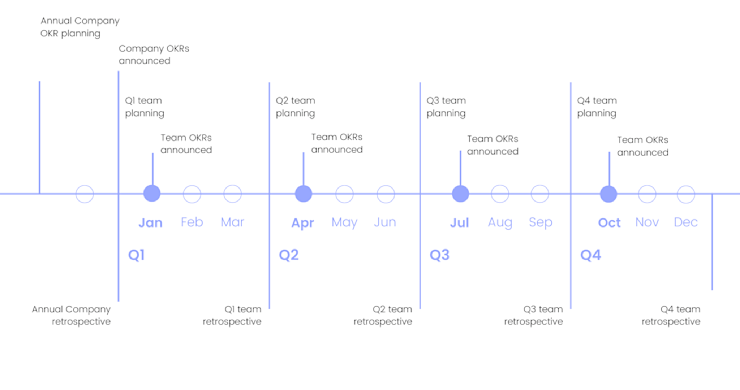Have you ever found yourself trying to encourage and inspire teams who seem stuck in neutral? It’s not always easy.
Motivating them requires strategy, understanding and patience. In this guide, we'll unpack how to motivate your employees across a range of 7 challenging scenarios. Whether your team is remote or right under your nose, disengaged or burning out - get ready for practical tips on turning things around.
This could be the spark you need to set your workplace ablaze with inspiration...
Why is it important to motivate employees?
To answer this question we first need to differentiate between employee motivation and employee engagement. They are highly related concepts, but refer to different aspects of the employee experience.
Employee motivation vs employee engagement
Employee motivation
Definition: The internal or external stimulus that drives employees to take action or achieve certain goals.
Focus: Centered on the factors that inspire employees to perform well, contribute their best efforts, and accomplish tasks.
Scope: Can be short-term and task-specific, aiming to achieve specific objectives or complete particular assignments.
Employee engagement
Definition: The extent to which employees are emotionally committed to their work, the organization, and its goals.
Focus: Concerned with the overall connection and commitment of employees to their work and the organisation as a whole.
Scope: Broader and long-term concept, encompassing motivation but also including factors like job satisfaction, organizational commitment, and a sense of belonging.
Motivation is more about the drive and energy employees invest in specific tasks or goals, while engagement is a holistic measure of employees' emotional connection and commitment to their work and the organisation.
High motivation can contribute to engagement, but engagement involves a more comprehensive and enduring relationship between employees and their work environment.
The benefits of employee motivation & engagement are clear:
Employees who are actively involved in their work are 87% less prone to leaving their current positions within the company, according to teamstage.
Gallup research showed that staff members exhibit a 20% improvement in performance when they are motivated.
Gallup also showed that highly engaged teams increase business profitability by 21%.
However, for the purposes of this article, we’re focusing on motivation specifically. Improving employee engagement in your organization is a tougher task and requires a more comprehensive overhaul. You can access our employee engagement plan and template for that here. Or contact our sales team to see if we can help you do that.
Let’s start exploring 7 different motivation scenarios. We’re sure you’ll find something that is applicable to your scenario…
How to motivate disengaged employees
The trick is not just getting your team to work, but inspiring them to give their best. Disengagement can sneak in and dampen spirits before you know it. Here are a few remedies for that…
Improve communication
To boost motivation among your team, make sure there's clear communication from top-down and bottom-up. Transparency breeds trust which fosters enthusiasm towards work tasks.
Praise good work
Celebrating wins - big or small - it matters. Acknowledging achievements makes workers feel valued which triggers positive behavior leading to improved performance. Learn how Eletive improves workplace engagement here.
Create personal development plans
Last but definitely not least; let each employee have a personal development plan – something tailored made for them based on their skills and interests like what we recommend here.
How to motivate underperforming employees
Addressing underperformance is vital for maintaining a healthy work environment. Lack of clear goals could lead to employees feeling directionless. We believe that this is one of the leading causes of underperformance.
To address that, we recommend the OKR framework (Objective and Key Results).
It consistently proves itself as an effective strategy for illustrating business goals, decomposing them into key results, and fostering organisational alignment.
Our platform facilitates the effortless creation, monitoring, and achievement of OKR goals for all users. By seamlessly linking objectives across the organisation, and then illustrating the collective contributions towards overarching goals. This is what a quarterly OKR implementation timeline could look like…

Related feature: Objectives & Key Results (OKRs) | Eletive
How to motivate employees to attend training
74% of UK workers feel they're not achieving their potential at work and desire more on-the-job training, per Middlesex University's Institute for Work-Based Learning1.
Furthermore, a report from IBM highlighted that employees who feel their companies invest in them are 12 times more likely to stay loyal.
So what does this tell us?
That people want chances for self-improvement. Use this as an incentive - show them how attending training will equip them with new abilities and expertise.
The power of recognition
An effective way is recognising those who attend training regularly or perform exceptionally well during sessions.
This could be through verbal praise at meetings or featuring top learners on internal communication channels.
Incentivise learning
You might also consider incentives such as learning-based bonuses or promotions linked directly to training achievements; these tangible rewards underscore the value you place on continuous improvement within your organisation.
If budget allows, even small gestures like vouchers for popular eateries or online stores could go down well.
How to motivate remote employees
Remote work brings flexibility and freedom, but it also carries its own set of hurdles. Isolation can lead to disengagement if not properly managed. On top of that, staying motivated when your home is your office isn’t always easy.
Fostering connection
To boost motivation among remote workers, fostering connection is key. This could mean regular virtual catch-ups or collaborative projects that make everyone feel part of the team.
Incentives that resonate with remote workers
Another way to motivate remote staff is through meaningful incentives – things that resonate with their unique needs and preferences as a telecommuter. Could flexible working hours help them balance personal commitments?
Or perhaps they'd appreciate professional development opportunities tailored towards their roles?
Elevating performance management
A well-executed performance management system goes hand in hand with employee motivation too. When people know what's expected of them and receive constructive feedback regularly, they're more likely to stay engaged at work - even from afar.
Take advantage of Eletive’s robust performance management features to guide your remote team effectively. Encouraging distant personnel can be a challenge, but with the appropriate resources and attitude you will soon have an active and effective virtual team. Remember - it's all about fostering connection, offering meaningful incentives, and implementing an effective performance management system. Related resource: Remote team building activities: 32 ideas for virtual teams
How to motivate burned-out employees
The first step is recognising when an employee is burned out. You might notice they're constantly tired, less productive, or struggling to focus on tasks they once managed easily. A big part of burnout comes from mental stress. If we understand how to identify mental health problems in the workplace, we can start taking steps towards recovery and motivation.
Sometimes all someone needs is reassurance their work matters. Positive feedback goes a long way.
Finding balance again
We must encourage employees to find balance again - both in life and work - because without balance, burnout becomes inevitable.
This could mean adjusting workload levels, encouraging regular breaks or offering flexible working hours so they can take care of personal responsibilities too.
Rethinking job roles
If an employee’s role doesn't align with their strengths or interests anymore then consider reshaping it around what energizes them instead.
Remember: People often don’t quit jobs – They quit bosses. So let’s make sure our management style isn’t contributing to their burnout either.
How to motivate retail employees
One way to keep spirits high is by recognising hard work. It doesn’t have to be grand gestures; small acts of recognition can go a long way too. Make sure you're acknowledging their efforts regularly.
Employee engagement in retail, after all, is tightly linked with motivation levels. An engaged employee is more likely to provide stellar customer service and stick around longer - reducing turnover rates.
Communicate openly: Keep lines of communication wide open between management and team members.
Promote from within: This gives staff something to strive for and shows that their efforts are noticed.
Create a positive environment: A friendly atmosphere where everyone feels valued makes all the difference.
The goal here?
To create an environment where every member feels appreciated, heard, and driven towards growth - because when your team wins, so does your business.
How to motivate employees in a non-profit organisation
Connect with the mission
The mission always comes first.
Immerse your team in the heartbeat of your non-profit by regularly illuminating the real-world impact of their work.
Share stories that vividly paint the picture of lives touched and communities transformed. Make the mission more than words on paper; turn it into a living, breathing entity that employees can see, feel, and be proud to be a part of.
Employee involvement in decision-making
Break down the walls of hierarchy and invite your team to the decision-making table.
Their desks might be different, but their voices are equally valuable. Whether it's shaping the next community initiative or brainstorming innovative approaches, let the collective wisdom of your team guide the ship.
This isn't about job titles; it's about fostering a culture where ideas flow freely, and everyone is not just an employee but a captain steering the ship of impact.
Social Impact Initiatives
Take the mission beyond the office walls and into the streets. Plan initiatives that are more than just checkboxes on a corporate social responsibility list.
Dive into the community, sleeves rolled up, and get your team involved in the grassroots. Whether it's planting trees, serving meals, or initiating conversations, make social impact a living, breathing reality.
These initiatives aren't just side projects; they are the DNA of your organization, embedding the spirit of positive change into the very fabric of your team's identity.
How to motivate employees as a manager: real-life example
As we stated at the beginning of this article, employee motivation is slightly different to employee engagement.
Nevertheless, tackling the larger obstacle of employee engagement will definitely have a knock-on effect on motivation levels.
That is exactly what Purmo Group achieved with Eletive. They increased employee engagement and motivation through strategic use of our platform. Here’s a summary of what they achieved/their wins:
Automated hierarchy management Eletive's automation streamlines Purmo Group's processes, saving HR time. It efficiently handles changes, allowing HR to focus strategically.
Flexible survey scheduling Eletive adapts survey schedules to Purmo Group's strategy, customizing intervals for different parts of the organization for a gradual transition to more frequent surveys.
Empowering managers Eletive empowers managers with proactive tools, shifting ownership and accountability for engagement, fostering a decentralized and participatory approach.
KIOSK and QR codes for blue-collar workers Eletive's KIOSK and QR codes enhance engagement for blue-collar workers, ensuring inclusivity and equal opportunities for all employees to contribute insights.
Let us see if we can help you increase your employee motivation too. Contact our sales team to schedule a demo here.
F&Q
What are five ways to motivate staff?
Show appreciation, offer growth opportunities, give constructive feedback, create a positive work environment, and encourage teamwork.
What is the best way to motivate employees at work?
The most effective motivation strategy often involves understanding individual needs and tailoring rewards accordingly.
How do you motivate unmotivated employees?
To boost unmotivated workers, identify their concerns or issues. Then design interventions that address these directly.
How do you make employees feel inspired?
Making them part of decision-making processes can spark inspiration. Encourage innovation by fostering an open culture where ideas are welcomed.

As Team Manager, Customer Success at Eletive Emelie is helping organisations build workplaces where people thrive. In her role, she enables delight among our customers and leads the Customer Success team to excellence.

























